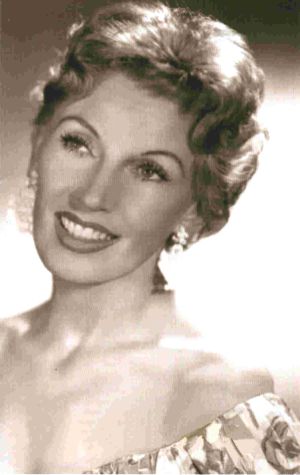Lale Andersen (Lale Andersen)

German Singer, Songwriter, and Actress. She is best remembered as the first singer of “Lili Marleen” (1939), which became one of the most popular songs of World War II. Born Liese Lotte Helene Berta Bunnenberg in Lehe, Germany (now a part of the city of Bremerhaven), she married Paul Ernst Wilke, a local painter, at the age of 17 just before she completed high school. They would have three children: Björn, Carmen-Litta, and Michael. The marriage broke up just after the birth of Michael, and she left the children in the care of her sister, Thekla, to go to Berlin in October 1929, to pursue an acting career. By 1931, she began appearing on stage in cabaret shows, and for the next several years, from 1933 to 1937, she would perform at the Schauspielhaus in Zurich, Switzerland. It was in Zurich that she met director Rolf Liebermann, who would become her close friend for the rest of her life. In 1938, she returned to Munich, Germany, and a few months later to Berlin, continuing her acting in cabarets. While in Berlin in 1939, she met norbert Schultze, who had just written the music for “Lili Marleen,” and was looking for a singer. She recorded the song for him, but it was not well received by the public, selling about 700 copies, and she returned to cabaret acting. When Germany occupied Yugoslavia in 1940, the recording of Lili Marleen was found by German radio operators, and was broadcast in 1941 over the radio show “Soldatensender Belgrad” (Belgrade Soldier’s Radio), to German forces in north Africa, where it became an instant hit. Because of her friendship with several Jews, including Rolf Liebermann, she was banned from acting or singing for nine months. When the popularity of Lili Marleen brought popular demand for more songs by Lale, Dr. Joseph Göbbels rescinded his ban in June 1942 on her performing, and ordered her to sing another version, this one militarized and with several drums added to the tune. Lale then participated in several minor roles in propaganda movies, singing propaganda songs, to redeem herself with the Nazi government authorities. Just before the end of the war, she moved to Langeoog, a small island off the German north Sea coast. After the war, she became a recluse, but in 1949, she married Swiss composer Arthur Beul, who encouraged her to return to music. In 1952, she made a comeback with the song “Die blaue Nacht am Hafen” which she wrote, and actively returned to public singing as a career. Seven years later, her version of “Ein Schiff wird Kommen,” the German version of the theme song for the movie “Never on Sunday” became a hit in Germany. She would tour Europe, the USA and Canada, until her retirement in 1967. Two years later, she published a songbook, “Wie werde ich Haifisch?” (How do I become a Shark?), and in 1972, published her autobiography “Der Himmel hat viele Farben” (The Sky has many colors), which became a best seller in Germany. Lale died of a heart attack while visiting Vienna, Austria, and was buried in the dune cemetery on the north Sea island of Langeoog (near Emden), where she lived much of her life. The photo of the statue is from her hometown of Langeoog, and honors Lale Andersen in the pose of Lili Marlene (as the girl who waits for her soldier love under the lamppost).
Born
- March, 23, 1905
- Germany
Died
- August, 29, 1972
- Austria
Cemetery
- Duenenfriedhof Langeoog
- Germany



